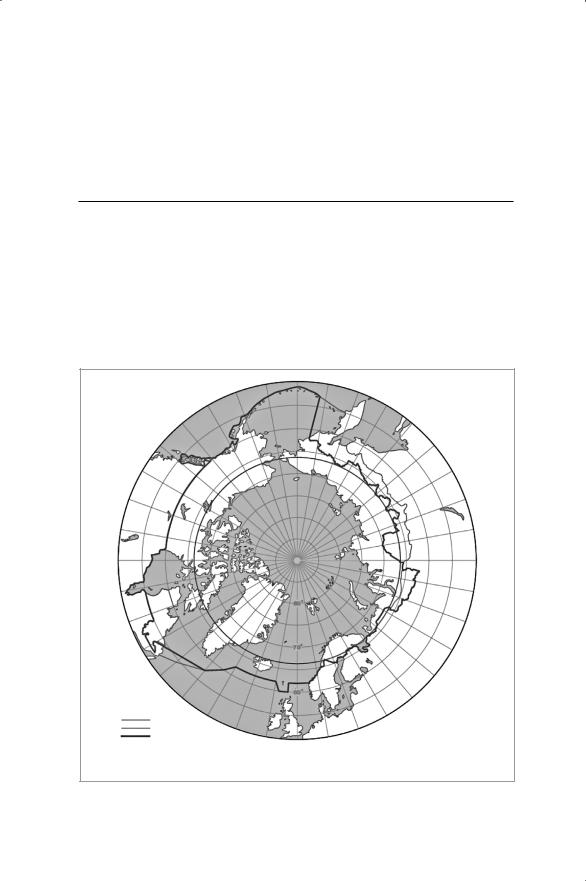
NPAC 2014 Proceedings_final
.pdf
114 |
Patterns of Arctic Investment |
Notes
1.Lloyd’s Report, “Arctic Opening: Opportunity and Risk in the High North.” (2012). Available at: www.lloyds.com.
2.The AIIB is an international financial institution proposed by China in 2013. In June 2014, China showed a revised proposal, doubling the registered capital of the bank from 50 billion USD to 100 billion USD and invited India to join the bank. The South Korean government has asked China to move the headquarters of the AIIB to Seoul or Songdo (Incheon City). See “Korea asks China for the AIIB headquarters,” Joongang Daily, July 15, 2014.
3.According to UPA statistics, liquid cargo handling, including oil and oil products, accounted for 70.5 % (134,600 ths. tons) in the total cargo handling volume in Ulsan Port in 2013. Ulsan Port consists of four ports: Main, Onsan, Mipo, and New ports. For more detailed information, see “Statistics of Ulsan Port” (in English) on the UPA’s official website (www.upa.or.kr).

PART II
COMPARING NATIONAL ARCTIC POLICIES
115

116 |
Comparing National Arctic Policies |

4.Canada’s Arctic Policy1
Bernard W. Funston2
The Arctic described in a number of Arctic Council publications is a vast region that includes some areas that are generally considered to be subArctic. For the purposes of this paper, the Arctic Council’s expansive definition of “Arctic” is adopted. In Canada, the lands and marine territories north of the 60°N latitude are commonly referred to as “the North.” Consequently, this paper treats “Canada’s Arctic policy” and “Canada’s northern policy” as one and the same thing.
Arctic circle |
Compled by W.K Dalmann, |
|
Arctic boundary: AMAP |
||
Norwegan Polar Institude |
||
Arctic boundary: AHDR |
||
|
Source: Arctic Human Development Report, 2004, p.18.
Figure II-1. Map showing the Arctic circle and a boundary of the circumpolar Arctic region
117

118 |
Comparing National Arctic Policies |
THE EVOLVING CONTEXT OF CANADA’S ARCTIC POLICY
Canada is a federation, which means in practical terms that Canada’s Arctic policy encompasses often-divergent views of several levels of government, including the Government of Canada, the governments of several provinces and territories, and indigenous peoples’ institutions and governments recognized in modern treaties. Significant political, economic and social changes have occurred in Canada’s Arctic or North in the past three decades. The evolving roles of the Territorial Governments (Yukon, Northwest Territories, Nunavut) and of the numerous indigenous peoples’ governments and organizations are perhaps the most dramatic developments. Territorial Governments and indigenous peoples governments and organizations are integral components of the political and economic decision-making processes in Canada’s North today. Fundamental amendments to the Yukon Act in 2003 and the NWT Act in 2014 to implement devolution agreements are examples of important transfers of jurisdiction and responsibility from the Government of Canada to northern governments in keys sectors such as resource development. Most recently, the Government of Canada has begun a process to negotiate devolution with the Government of Nunavut.
Similarly, modern Aboriginal land claim and self-government agreements in the Yukon, NWT, Nunavut, northern Quebec, and Labrador contain important land and resource rights, as well as a variety of governance and administrative arrangements that affect decision-making in relation to Arctic lands and waters. For example, environmental protection provisions in most of these agreements create powerful boards and agencies with guaranteed representation for indigenous peoples, to encourage sound decision making in relation to resource development. Together, these complex legislative, regulatory and policy-making processes constitute the major elements of the broad scope of “Canada’s Arctic policy.”
The body of this paper will focus primarily on the policies of the Government of Canada (hereinafter referred to as “Canada”). A number of departments or ministries in the Government of Canada have activities in the Arctic and carry out their mandates in accordance with key statutes and policies. A lead department on domestic Arctic affairs is the Department of Aboriginal Affairs and Northern Development (AANDC). However, other departments such as Fisheries and Oceans, Natural Resources

Canada’s Arctic Policy |
119 |
Canada, Parks Canada, and Environment Canada also have significant responsibilities in the region. At the international level, the Department of Foreign Affairs, Trade and Development is the lead for Arctic Council matters.
CANADA’S VISION FOR THE FUTURE OF THE ARCTIC
There are several key documents in relation to the Arctic that represent the formal policy pronouncements of the current Government of Canada. These include:
•Canada’s Northern Strategy: Our North, Our Heritage, Our Future (2009);
•Canada’s Arctic Foreign Policy Statement: Exercising Sovereignty and Promoting Canada’s Northern Strategy (2010); and
•Canada’s Arctic Council Chairmanship Program 2013-2015 (2013)
While these documents share many common themes and positions with previous Liberal and Conservative federal governments, the policy approach to Arctic issues taken by the Conservative government of Prime Minister Stephen Harper has been quite different. Indeed, the policy development process itself has undergone significant change during the term (2006 to present) of the Harper government. More will be said on this point below.
Prime Minister Harper has shown sustained personal interest in the Arctic. Unlike any other prime minister in Canadian history, he has made annual trips to the region since becoming prime minister in 2006. The record of achievement in the Arctic of the current Government of Canada has been significant, but the longer-term implications of current policies are difficult to understand and predict. There is much uncertainty, for example, in relation to the direction of Canada’s Arctic science and research policy, climate change and environmental protection policies, and the tenor and direction of circumpolar/international cooperation through such bodies as the Arctic Council.
In 2009 the Government of Canada released its Northern Strategy.3 The strategy is based on recognition that the Arctic is on “the cusp of change.” It contains the following domestic vision statement:

120 |
Comparing National Arctic Policies |
“The Government of Canada has made the North a top priority, placing it higher on the agenda than it has been in many decades. This Government has a clear vision for the North as a healthy, prosperous region within a strong and sovereign Canada. By moving forward with Northern Strategy commitments and ensuring results are benefiting Northerners and all Canadians, the Government of Canada is making substantial progress across all four priority areas: exercising our Arctic sovereignty, protecting our environmental heritage, promoting social and economic development, and improving and devolving Northern governance.”4
In 2010, the international dimensions of Canada’s Northern Strategy were articulated in an Arctic foreign policy statement entitled Exercising Sovereignty and Promoting Canada’s Northern Strategy.5
“Canada’s vision for the Arctic is a stable, rules-based region with clearly defined boundaries, dynamic economic growth and trade, vibrant Northern communities, and healthy and productive ecosystems. The statement articulates Canada’s priorities with respect to sovereignty, economic and social development, environmental protection, and governance in the Arctic region. It details the ways Canada will show leadership and work with others to demonstrate responsible stewardship and to build a region that is responsive to Canadian interests and values.”6
The Harper government actually began implementing elements of these policies in 2007. Such initiatives included:
•156 million USD to support Canadian participation in the fourth International Polar Year;
•200 million USD over two years for the renovation and construction of new housing units in the North;
•Initiating a procurement process for six to eight new Arctic patrol ships;
•50 million USD over five years for the creation of a northern economic development agency;
•85 million USD over two years to maintain and upgrade Arctic research facilities;

Canada’s Arctic Policy |
121 |
•90 million USD over five years for the renewal of the Strategic Investments in the Northern Economic Development program;
•Initiating a procurement process for a new Polar icebreaker, the CCGS John G. Diefenbaker;
•37.6 million USD to support initiatives related to the proposed Mackenzie Gas Project;
•Expansion and modernization of the Canadian Rangers Program;
•100 million USD for a five-year (2008-2013) Geo-mapping for Energy and Minerals (GEM) Program geological mapping program to support increased exploration of natural resources and inform decisions on land use;
•RADARSAT-2, a commercial radar satellite, launched in December 2007, for marine surveillance, ice monitoring, disaster management, environmental monitoring, resource management and mapping in Canada and around the world, and the planned RADARSAT Constellation Mission (2018) to provide complete coverage of Canada’s vast land mass, oceans and coastal approaches at least once per day and up to four times daily in the high Arctic, under all weather conditions;
•More than 85 million USD from 2008 to 2014 to conduct research relating to the Canada’s claim for an extended continental shelf in the Arctic;
•More recently, in 2012, the Conservative government announced 142.4 million USD over six years for construction and equipment for a new Canadian High Arctic Research Station (CHARS) in Cambridge Bay, Nunavut, including 46.2 million USD over six years for the CHARS Science and Technology research program. For 201819, an additional 26.5 million USD has been set aside for the ongoing program and operations of CHARS; and
•Also of note are commitments of 300 million USD to build a highway from Inuvik to Tuktoyaktuk to connect the Arctic Ocean coast to the rest of Canada’s road network, and renewed support for the GEM Program in the amount of 100 million USD over seven years (20132020).
What these and other expenditures demonstrate is a strong commitment to the North/Arctic, with a particular focus on economic development. In addition the prime minister has personally encouraged and supported

122 |
Comparing National Arctic Policies |
initiatives that attempt to raise public interest in the Canadian North and its history. Key among these initiatives was the search effort to locate the ships of the ill-fated Franklin expedition from the mid-1800s. This enduring mystery was solved in part with the discovery of the remains of the Erebus in the summer of 2014.
CANADA’S ARCTIC COUNCIL CHAIRMANSHIP PROGRAM 2013-2015
In August, 2012, Prime Minister Harper announced that the Honourable Leona Aglukak, then Canada’s Minister of Health, now Minister of the Environment, would serve as Canada’s Arctic Council Chair. This appointment was somewhat surprising, because since the inception of Arctic Council, the Minister of Foreign Affairs had been Canada’s head of delegation at Arctic Council ministerial meetings. However, Minister Aglukak, an Inuk from Nunavut with a life-long understanding of the Arctic, had served as Canada’s ministerial representative at the Nuuk Ministerial Meeting in May, 2011 (Minister of Foreign Affairs Lawrence Cannon had lost his seat in parliament in a national election a few weeks before the Nuuk Ministerial Meeting and no new foreign minister had yet been appointed.).
Vowing to strengthen the Arctic Council and demonstrate strong leadership, Canada announced the broad themes for its chairmanship at the Senior Arctic Officials (SAOs) meeting in Haparanda, Sweden in November, 2012. The overarching theme is “Development for the People of the North” with a focus on creating conditions in the North for dynamic economic growth, vibrant communities, and healthy ecosystems.7 Three subthemes - 1. Responsible Arctic Resource Development, 2. Responsible and Safe Arctic Shipping, and 3. Sustainable Circumpolar Communities, - reinforced the overall emphasis on long-term prosperity for northerners while committing to maintain high standards of environmental protection. The subthemes were deliberately broad, to accommodate ongoing council work as well as Canadian priorities.8
In the period following the announcement of this theme and subthemes, Canada prepared 10 draft proposals for activities to flesh out this program. These proposals were brought forward for approval by the other Arctic states in the run-up to the 2013 Kiruna Ministerial Meeting. The titles of

Canada’s Arctic Policy |
123 |
these 10 proposals are as follows:
1.Oil Spill Environmental Sensitivity Mapping in the Arctic
2.Circumpolar Business Forum
3.Promoting Mental Wellness in Northern Circumpolar Communities
4.Protecting Arctic Lifestyles through Migratory Bird Conservation
5.Arctic Adaptation Exchange: Facilitating Adaptation to Climate Change
6.Development of an Instrument or Other Arrangement to Address Short-Lived Climate Pollutants
7.Guidelines for Arctic Marine-based Tourism and Cruise Ship Operation
8.Strengthening the Arctic Council
9.Supporting Traditional/Community Lifestyles and Knowledge
10.Arctic Marine Oil Pollution Prevention
Although the incoming chair generally has significant influence on the substantive elements of Arctic Council declarations, only a few of Canada’s initiatives survived the Kiruna negotiations intact. In a published article examining the Canadian Arctic Council Program, one commentator concludes that Canada’s agenda going into the Kiruna meeting emerged in a significantly weakened form:9
“…Canada proposed an expansive policy agenda for the Arctic Council in the months preceding the Kiruna meeting. In doing so Canada drew upon a February 2013 statement by environment ministers of all Arctic states which urged the Arctic Council to commit to negotiate ‘an instrument or other arrangement to enhance efforts to reduce emissions of black carbon.’ Notwithstanding these efforts, the most substantial components of Canada’s proposed policy agenda–preventing pollution of the marine environment, reducing emissions of black carbon and concluding a polar code for shipping–have been visibly watered down. These issues will still be addressed during Canada’s chairmanship, but instead of negotiation of international agreements or ‘instruments’–processes which attract and focus political attention–the stage seems set for further research and technical analysis. Moving these issues from research to international public policy formation will likely have to await the chairmanship of the USA…. This prompts an obvious question: What will be achieved in line with Canada’s Arctic Council theme, ‘Development for the People of the North’? The
